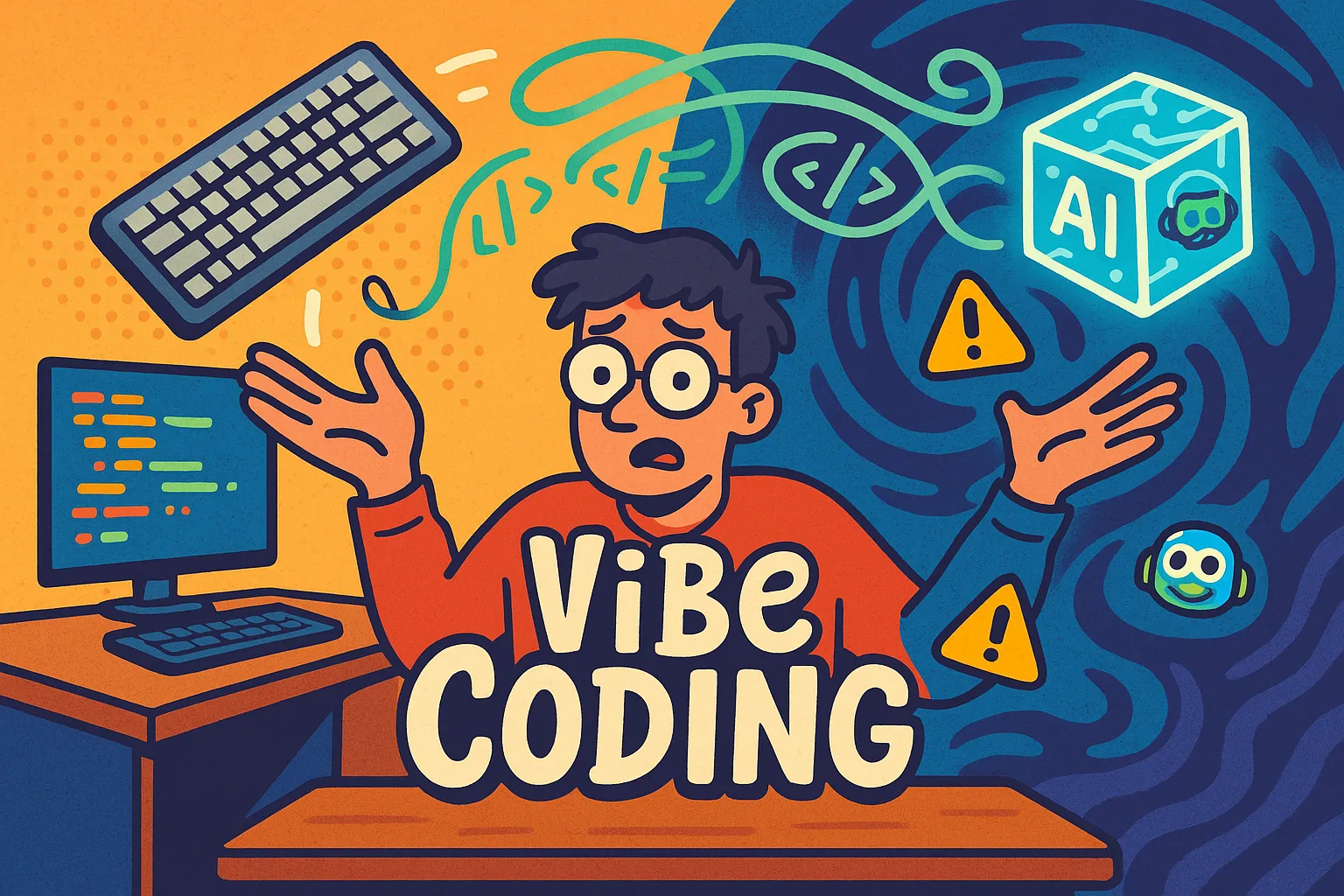Why AI-Assisted Development Isn’t a Silver Bullet
As a UX Designer and IT Solutions Architect with over two decades of experience, I’ve witnessed countless tech trends rise and fall. Vibe coding—using AI tools like GitHub Copilot or Amazon CodeWhisperer to generate code from natural language prompts—promises revolutionary productivity gains. But beneath the hype lies a critical truth: AI-generated code introduces significant risks that can compromise software integrity, security, and scalability. In this deep dive, we’ll dissect these limitations, armed with real-world data, tools, and mitigation strategies.
1. Code Quality: Hallucinations and Hidden Vulnerabilities
AI models generate code statistically, not logically. They predict patterns from training data (often public repositories), leading to two core flaws:
a) Hallucinated Bugs
AI “hallucinations” occur when models generate syntactically valid but logically flawed code. For example:
# AI-generated "prime number checker" def is_prime(n): return n > 1 and all(n % i != 0 for i in range(2, int(n**0.5))
The bug: int(n**0.5) should be int(n**0.5) + 1. This fails for squares of primes (e.g., 9). Such subtle errors evade initial review and manifest in production.
Real-World Impact:
In a 2023 Stanford study, developers using Copilot introduced bugs 40% more frequently when accepting AI suggestions uncritically.
Hallucinations worsen with ambiguous prompts (e.g., “optimize this function”) due to misaligned context.
b) Security Vulnerabilities
AI tools regurgitate patterns from training data—including vulnerabilities. OWASP Top 10 flaws like SQL injection or XSS frequently appear:
// AI-generated login endpoint (Node.js) app.post('/login', (req, res) => { const query = `SELECT * FROM users WHERE username='${req.body.username}'`; // SQL Injection risk! });
Why it happens:
Models like Codex lack “security awareness”; they prioritize code that “looks right” over robust design.
Training data includes vulnerable code (e.g., 2021 research found 40% of Copilot suggestions for C/C++ contained unsafe memory practices).
Mitigation Tools:
Static Analysis: Integrate SonarQube or Snyk into CI/CD pipelines.
Linters with Security Rules: Use ESLint Security Rules or Bandit for Python.
Prompt Engineering: Specify constraints (e.g., “Use parameterized queries to prevent SQL injection”).
2. Debugging Challenges: The Opaque Logic Problem
Debugging AI-generated code feels like reverse-engineering a black box:
a) Unintuitive Implementations
AI often produces complex, unreadable solutions. For instance, a simple “sort users by name” prompt might yield:
// AI-generated sorting (JavaScript) users.sort((a, b) => (a.name < b.name ? -1 : Number(a.name > b.name)));
Issues:
Overly clever logic (e.g.,
Number(a.name > b.name)) hampers readability.No comments or documentation explaining the approach.
b) Traceability Gaps
When code fails, traditional debugging (stack traces, breakpoints) struggles because:
The AI’s reasoning isn’t mapped to requirements.
Generated code may lack modularity (e.g., monolithic functions).
Case Study: A fintech team using ChatGPT for transaction logic spent 72% longer debugging AI code versus human-written code due to cryptic control flows.
Debugging Tools:
Runtime Observability: Instrument code with OpenTelemetry.
AI Explainability Tools: Tools like SHAP (for ML models) or CodeLens for code history.
Structured Logging: Enforce standards with Pino (Node.js) or Structlog (Python).
3. Scalability: When Performance Matters
Vibe coding crumbles under performance-critical demands:
a) Algorithmic Inefficiency
AI defaults to “common” solutions, ignoring context:
# AI-generated "find duplicates" def find_duplicates(arr): return [x for x in arr if arr.count(x) > 1]
Flaw: O(n²) complexity vs. an O(n) dictionary-based approach.
b) Concurrency Pitfalls
AI struggles with thread-safe or distributed logic:
Race conditions in generated async code.
Poorly optimized database queries (e.g., N+1 selects).
Evidence:
In 2024 benchmarks, AI-generated Go routines for a messaging app caused 3× more deadlocks than expert code.
AI rarely considers hardware constraints (e.g., cache locality, GPU parallelism).
Optimization Frameworks:
Concurrency Libraries: Use Akka (JVM) or Ray (Python) for distributed tasks.
High-Performance Primitives: Leverage Intel oneAPI or CUDA for compute-heavy tasks.
The Path Forward: Mitigating Risks
Vibe coding isn’t inherently flawed—it’s a tool that demands guardrails:
Best Practices
Code Review as Non-Negotiable: Treat AI output as “first drafts.” Tools like ReviewPad automate quality gates.
Security-First Prompting:
Bad: “Create a user login endpoint.”
Good: “Create a login endpoint using bcrypt password hashing and parameterized SQL.”
Performance Testing Early: Integrate load testing (e.g., Locust) in development.
Hybrid Workflows: Use AI for boilerplate (e.g., CRUD endpoints), not core logic.
Future Evolution
Emerging tools like Google’s Project IDX aim to add “explainability layers” to AI code. Until then, human oversight remains irreplaceable.
Conclusion
Vibe coding accelerates development but at the cost of technical debt, security gaps, and scalability cliffs. As I’ve advised Fortune 500 teams: Use AI as a collaborator, not a replacement. Pair it with rigorous review, observability, and domain expertise. The future of coding isn’t human vs. machine—it’s human + machine, with clear boundaries.
“Technology should solve problems, not create them. AI-generated code is no exception.”
References & Tools
Recommended Tools:
Code Quality: SonarQube, Snyk, ESLint
Debugging: OpenTelemetry, Rookout
Performance: Py-Spy, Akka, Locust
Security: Bandit, OWASP ZAP
Frameworks for Scalable AI-Assisted Development:
Backend: NestJS (TypeScript), Spring AI (Java)
ML Pipelines: Hugging Face + Ray
Observability: Grafana Stack, Datadog


